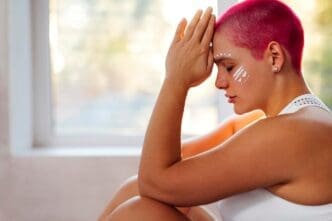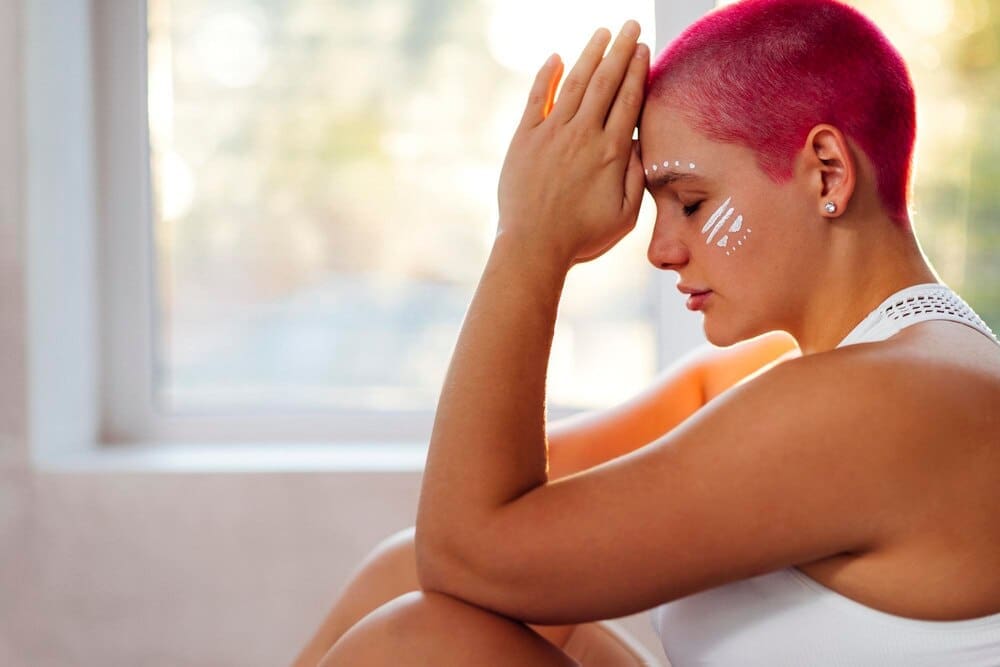Dermatillomania, a serious but often misunderstood mental health condition, compels individuals to repetitively pick at their own skin, leading to significant physical and emotional distress. Known clinically as excoriation disorder, this condition is not a mere habit but a complex Body-Focused Repetitive Behavior (BFRB) that affects people of all ages, frequently beginning in adolescence and co-occurring with anxiety or Obsessive-Compulsive Disorder (OCD). The picking is driven by an intense urge to smooth or “fix” perceived imperfections, providing a fleeting sense of relief that is quickly replaced by shame and guilt. For those struggling, particularly in appearance-conscious environments like Miami, understanding that this is a treatable disorder is the first step toward finding relief through specialized, evidence-based therapies and community support.
What is Dermatillomania?
At its core, dermatillomania is a psychiatric disorder officially recognized in the Diagnostic and Statistical Manual of Mental Disorders, 5th Edition (DSM-5). It belongs to a category called “Obsessive-Compulsive and Related Disorders,” which also includes conditions like trichotillomania (hair-pulling disorder). It is far more than simply popping a pimple; it is a compulsive behavior that individuals feel powerless to control, despite repeated attempts to stop.
The diagnostic criteria specify that the skin picking results in noticeable skin lesions and causes significant distress or impairment in daily life. This could mean avoiding social events, missing work or school, or spending hours each day engaged in the behavior or concealing its effects. The behavior is not better explained by another medical issue, such as a skin condition like scabies, or the effects of a substance.
This disorder is one of several Body-Focused Repetitive Behaviors (BFRBs), which are a set of compulsive, self-grooming behaviors that damage the body. Individuals with dermatillomania may pick at pimples, scabs, calluses, or healthy skin, often using their fingernails but sometimes employing tools like tweezers or pins. The most common areas include the face, arms, and hands, but any part of the body can be a target.
The Psychological Roots of Skin Picking
Understanding dermatillomania requires looking beyond the physical action to the complex psychological cycle that drives it. The behavior is rarely about self-harm in the traditional sense; instead, it is often a dysfunctional coping mechanism for overwhelming emotions or a response to an obsessive thought.
The cycle typically begins with a trigger. This could be an internal feeling, such as stress, anxiety, or even boredom, or an external one, like seeing one’s reflection in a mirror or feeling a tiny bump on the skin. This trigger creates an intense, mounting urge to pick, which becomes all-consuming.
During the act of picking, many individuals report entering a trance-like or dissociative state, losing track of time and awareness of their surroundings. This phase can provide a temporary feeling of relief, pleasure, or satisfaction as the tension is released. However, this relief is short-lived and is almost always followed by a crash of negative emotions: deep shame, regret, embarrassment, and self-loathing. These painful feelings can then become a new trigger, perpetuating the cycle.
Co-occurring Conditions
Dermatillomania rarely exists in a vacuum. It frequently co-occurs with other mental health conditions, which can complicate diagnosis and treatment. A strong link exists with Obsessive-Compulsive Disorder (OCD), as both involve intrusive urges and repetitive behaviors aimed at reducing distress.
Anxiety and depression are also common companions. For many, skin picking serves as a way to regulate intense emotions, providing a tangible focus for intangible psychological pain. It can also be linked to Body Dysmorphic Disorder (BDD), a condition where individuals are preoccupied with perceived flaws in their appearance. In these cases, the picking is a desperate attempt to “correct” these perceived defects.
The Physical and Emotional Toll
The consequences of chronic skin picking are twofold, affecting both the body and the mind. The physical damage can range from minor to severe, including redness, swelling, bleeding, and permanent scarring. Open wounds create a high risk of secondary infections, some of which may require antibiotics or other medical interventions to resolve.
In some cases, the tissue damage can be so extensive that it necessitates dermatological procedures or even minor surgery. The constant cycle of wounding and healing can also lead to hyperpigmentation (dark spots) or hypopigmentation (light spots), altering the skin’s appearance permanently.
Equally devastating is the emotional and social toll. The shame associated with dermatillomania often leads to profound isolation. Individuals may go to great lengths to hide their skin with makeup or specific clothing, even in hot weather. They might avoid activities like swimming, going to the gym, or being intimate with a partner for fear of their skin being seen. This avoidance can strain relationships and severely limit one’s quality of life.
Finding Help: Evidence-Based Treatments
The most important message for anyone struggling with dermatillomania is that it is a treatable condition. While there is no “cure,” several evidence-based therapies can help individuals gain control over their behavior and significantly reduce its impact.
Cognitive Behavioral Therapy (CBT)
Cognitive Behavioral Therapy (CBT) is considered the gold-standard treatment for BFRBs. This therapeutic approach helps individuals identify the dysfunctional thoughts, feelings, and situations that trigger picking. A therapist works with the client to challenge these thought patterns and develop healthier, more effective coping strategies for managing stress and other difficult emotions.
Habit Reversal Training (HRT)
A specific and highly effective form of CBT is Habit Reversal Training (HRT). HRT is a behavioral therapy that consists of two main components. The first is awareness training, where the individual learns to recognize the earliest signs of an urge and the specific situations that trigger it. This heightened self-awareness is the first step toward interrupting the behavior.
The second component is competing response training. Once an urge is identified, the individual implements a “competing response”—a behavior that is physically incompatible with picking. This could be clenching their fists for 60 seconds, sitting on their hands, or playing with a fidget toy. The goal is to ride out the urge without giving in to it.
Acceptance and Commitment Therapy (ACT)
ACT is another promising approach that teaches mindfulness skills to help individuals accept uncomfortable thoughts and urges without acting on them. Rather than trying to eliminate the urges, ACT encourages clients to “make room” for them while staying focused on actions that align with their personal values. This helps break the link between having an urge and the compulsion to act on it.
Medication
While therapy is the frontline treatment, medication can be a helpful adjunct for some. There are currently no medications specifically FDA-approved for dermatillomania. However, some drugs are used “off-label” with success, including Selective Serotonin Reuptake Inhibitors (SSRIs), which are commonly used for OCD and anxiety. More recently, research has shown promise for N-acetylcysteine (NAC), an over-the-counter supplement that appears to modulate glutamate levels in the brain and can help reduce compulsive urges.
The Miami Mental Wellness Landscape
For residents of Miami and South Florida, the unique cultural and environmental pressures can sometimes exacerbate the challenges of dermatillomania. The year-round warm climate means more skin is on display, and a strong cultural emphasis on physical appearance can heighten self-consciousness about any perceived flaw. However, as a major metropolitan hub, Miami also offers a robust and growing landscape for mental wellness and recovery.
Access to Specialists
One of the key advantages of seeking help in a city like Miami is the concentration of specialized healthcare providers. There are numerous psychologists and therapists who specialize in CBT, HRT, and treating OCD-related disorders. Resources like the provider directory from The TLC Foundation for BFRBs or platforms like Psychology Today can help connect individuals with qualified local experts. Furthermore, major academic institutions like the University of Miami Health System often have departments of psychiatry and psychology with clinicians at the forefront of BFRB research and treatment.
Integrated Care Models
The connection between skin health and mental health is critical in treating dermatillomania. Miami’s healthcare ecosystem facilitates an integrated approach, where dermatologists and mental health professionals can collaborate. A patient who initially seeks help from a dermatologist for skin damage can receive an informed referral to a therapist specializing in BFRBs, ensuring that both the physical symptoms and the underlying psychological cause are addressed.
Support Groups and Community
The isolation caused by dermatillomania is one of its most painful aspects. Connecting with others who share the same struggle is incredibly validating and empowering. Both in-person and virtual support groups are available in the Miami area, providing a safe space to share experiences and strategies without fear of judgment. This sense of community is a powerful antidote to shame.
Practical Strategies for Managing Urges
In addition to professional therapy, individuals can implement practical, day-to-day strategies to manage picking urges.
One effective technique is to modify the environment to reduce triggers. This might involve covering or removing magnifying mirrors, using low-wattage light bulbs in the bathroom, or wearing gloves or bandages on the fingers to create a physical barrier.
Engaging the hands and senses with alternative, non-destructive activities is also key. Keeping fidget tools, stress balls, or smooth stones nearby can provide a safe outlet for restless hands. Applying lotion or a soothing cream can also transform a moment of potential picking into an act of self-care.
Finally, practicing mindfulness and delay tactics can be very powerful. When an urge arises, instead of immediately acting, one can try to “urge surf”—observing the sensation as it builds and falls like a wave, without being swept away by it. Setting a timer to delay the behavior for just five minutes can sometimes be enough for the urge to lose its intensity.
Dermatillomania is a challenging and distressing disorder, but it is not a life sentence or a reflection of one’s character. It is a treatable mental health condition. With the right combination of evidence-based therapies like HRT, a supportive community, and practical self-management strategies, recovery is possible. For those in Miami and beyond, taking the brave first step to seek help can open the door to healing, self-compassion, and a life no longer controlled by compulsion.














